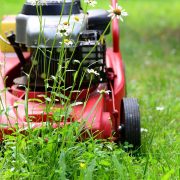Winter can be a harsh season for your home. But you can do all sorts of things to minimize potential damage and keep yourself warm. However, there are a few things homeowners need to take care of as the temperature drops and the winter months start to arrive. Here are some of the best home maintenance tips to keep your home in great shape before winter arrives.
Roof Inspection
Before you get too comfortable in your cozy home, it’s essential to give your roof a quick inspection.
Check for damage in the roof shingles and gutters. Look for damaged shingles that may cause water to leak into your attic during heavy rainfall. Any loose or missing flashing could cause leakage problems and mold growth in your attic space. Ensure all nails are secure on the roof, so they do not become dislodged with winter winds and cause damage inside the home.
Remember that many things could go wrong with roofs before winter arrives. You can easily prevent some issues by checking them before the snow flies!
Check the Heating System
It’s not too early to start thinking about your heating system. But, before winter hits, you should:
- Check your heating system is clean and free of dust: Dust can build up in the ducts, reducing airflow and making it harder for your furnace to do its job. The result? You might find yourself freezing.
- Check its efficiency: If you have an older model, consider upgrading it to lower energy bills and reduce greenhouse gases in your home this season!
- Check safety: If there are problems with any parts of the furnace involved in keeping warm during colder months, have them repaired/replaced. Ensuring everyone stays safe throughout the winter weeks ahead!
Check the Weather Conditions
Checking the weather before you start your house maintenance is crucial. If you’re unsure what to look for, check the weather forecast before winter arrives. The weather in Cape Town, where I live, can be unpredictable and change quickly. So it’s important to know what you’re up against. The best way to get an idea is by looking at the climate maps. You can compare them with previous years’ averages.
The temperature, wind speed, and rainfall will determine whether your home is ready for the cold season or not. It’s also important to note how much rain there has been over the past few months. This information will enable you to prepare for any possible water damage during this period.
Chimney Cleaning
Cleaning your chimney is one of the best ways to keep it functional and safe. The following steps will help you make sure it is in good condition before winter arrives:
- If you have a fireplace, clean it thoroughly before using it for the first time this season. It means sweeping out all debris from last year’s fires and removing cobwebs on top of the hearth.
- Check for blockages by holding a flashlight inside the mouth of your fireplace when not in use. If you can see the light shining through on the other side, there are no obstructions blocking airflow.
- If there are obstructions, try using a vacuum cleaner. Use the attachments designed specifically to clean chimneys or fireplaces/stove bricks. It should allow you access to areas where they are difficult to reach.
Upgrade Home Insulation
You might want to consider improving your home’s insulation. Proper insulation can help:
- reduce condensation,
- keep heat from escaping,
- reduce noise pollution, and
- even reduce the fire risk.
Insulation prevents moisture from building up inside your walls by creating an air barrier between the outer and inner spaces. It helps prevent mold growth and makes it easier to keep humidity levels low throughout the year. Especially during those cold months when heating systems are running at full blast!
Insulation slows down how quickly heat passes through windows and walls to maintain comfortable temperatures inside. As a result, it allows less energy wastage on heating bills! Not only that, but it also means less greenhouse gas emissions produced, which is excellent.
Check for Air Leaks
Before the winter arrives, it’s essential to check for air leaks around windows and doors. Air leaks can be caused by drafts and gaps around windows, doors, and electrical outlets. Here are a few ways you can determine if you have an air leak:
- Use a candle flame as a draft detector. Light the wick on one end of a lit candle and hold it against various spots around your home until you see smoke appear in front. That means there’s likely an air leak at that spot.
- Use a pencil eraser to detect small gaps.
- Use cotton balls to spot more significant gaps between windowpanes or siding boards.
- Use weather stripping to seal any openings between windows, walls, floors, and ceilings.
Ducts Inspection
If you haven’t already, look at the ducts running throughout your home. While it may seem daunting, inspecting them will help ensure that they are in good condition. In addition, ensure that they are ready to handle the coming winter months easily.
Check for leaks in ducts: Leaks can occur due to wear and tear over time or due to damage caused by water or dust. For example, a leaky roof can cause cracks in walls that lead down into your basement, where an air return unit may be attached. If these cracks aren’t repaired before they get too big, moisture could seep into the space between insulation layers. In addition, it can cause mold growth inside, which could further increase the problem.
Protect Outdoor Pipes
Outside your home, you’ll find many pipes susceptible to freezing once winter rolls around. To protect them:
- Use heat tape or heat cables to keep water from freezing in outdoor faucets and fixtures. Heat cables are relatively inexpensive and can be installed by yourself.
- If you have a water meter, wrap it with insulation even if it’s not in direct contact with ice or snow.
- If you have a sprinkler system, turn it off and drain it, so it doesn’t freeze up when temperatures drop. It’ll make springtime maintenance tasks more manageable. If there aren’t any visible problems on the surface, run some water through each valve carefully until no more drips come out.
Preparing Ahead is the Key
We hope these tips have helped prepare you for the cold season ahead. If you haven’t already, give your roof and pipes a good check-up before the storms start rolling in. Also, don’t forget to change your filters and clean out your dryer vent. It will help you avoid any mishaps when the weather gets colder. And last but not least, always be prepared with an emergency kit if something goes wrong. With these tips under your belt, we think you’re ready for whatever winter throws at you!












